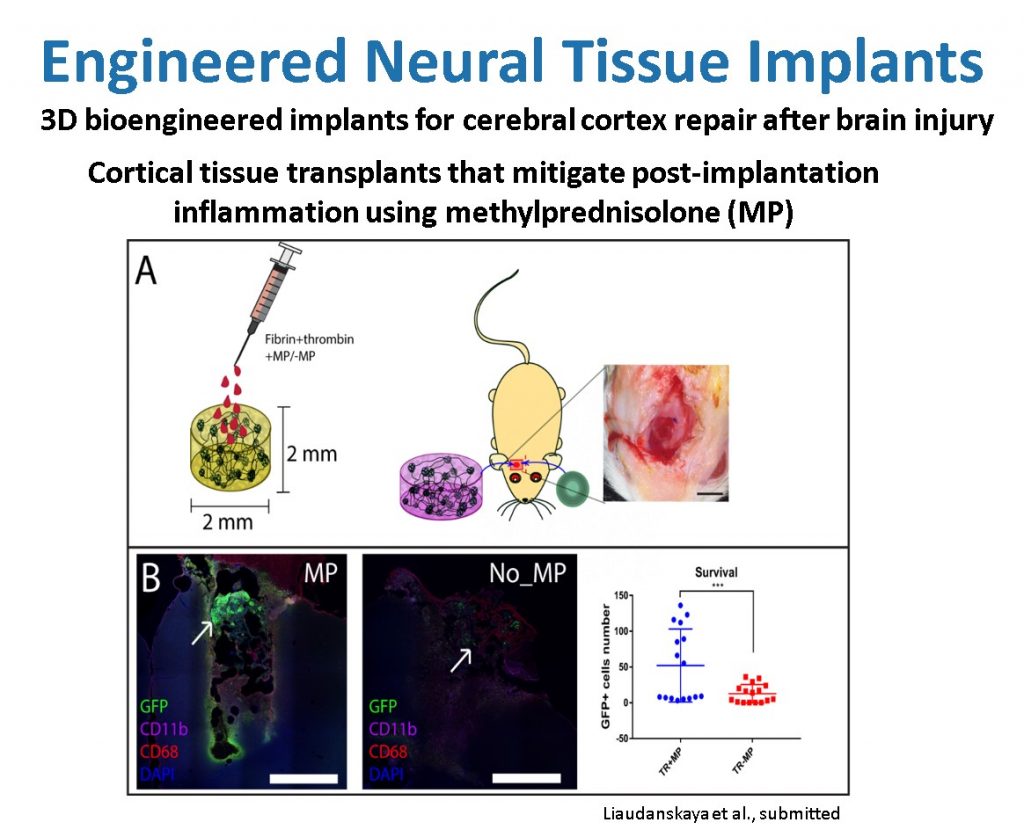
Treatment of traumatic brain injury is limited by the brain’s inability to adequately repair itself. Current approaches for replacing damaged brain tissue lack control of cellular composition and architecture of the implants leading to poor integration, cellular death, and adverse immune response to the graft. In order to address the deficiencies in the current standard of care, we propose the use of tissue engineering principles to create a complex 3D bioengineered brain tissue transplant for repairing defects in the damaged brain. Our innovative approach is to prepare a graft that is: (A) structurally robust, biocompatibile, and matches the layered physical structure and cellular organization of the brain, (B) incorporates anti-inflammatory drugs and biomolecules to reduce inflammation in the brain and support cell survival, and (C) includes support cells (astrocytes, microglia) to improve transplant survival and integration. This approach should suppress host inflammatory responses and promote long-term survival and integration, which is particularly important for repairing large cavity defects, rebuilding brain circuitry and restoring brain function in traumatic brain-injury patients.